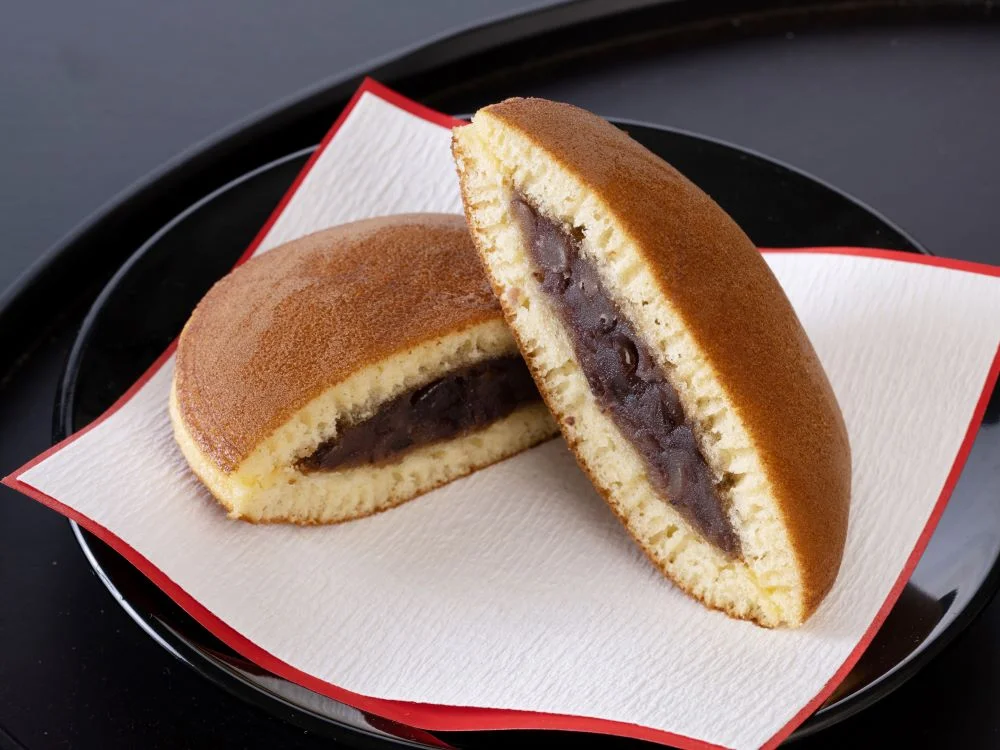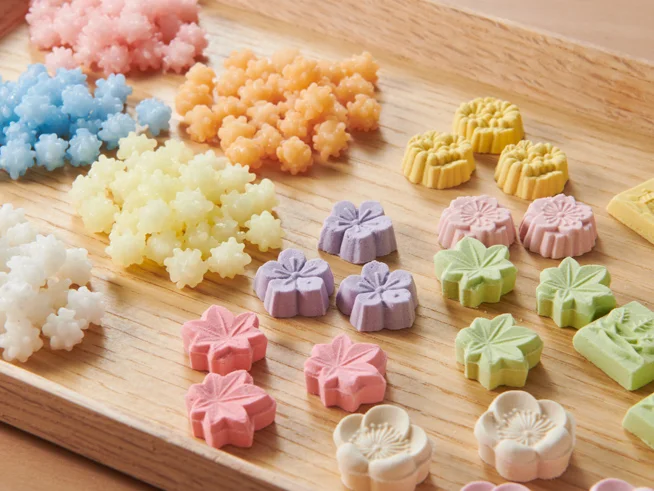Wagashi: The Hidden Health Benefits Beyond Sweetness
When people think of wagashi, many imagine sweets made with lots of sugar. Indeed, wagashi are known for their exquisite taste, but hidden behind this sweetness are unexpected health benefits. While wagashi are generally not considered healthy treats, this isn’t always the case. Let’s take a closer look at the nutritional value and health benefits of wagashi.
Wagashi vs. Western Sweets: The Surprising Truth About Nutritional Value
When comparing wagashi to Western sweets, some interesting facts emerge. Generally, wagashi are lower in fat and not as high in calories as Western sweets. This is largely due to the fact that the main ingredients in wagashi are plant-based.
Let’s compare the nutritional values of wagashi and Western sweets in the following table:
| Sweet Name | Energy (kcal) | Protein (g) | Fat (g) | Carbohydrates (g) | Dietary Fiber (g) |
|---|---|---|---|---|---|
| Daifuku Mochi | 235 | 4.8 | 0.5 | 52.8 | 2.5 |
| Steamed Yokan | 242 | 4.4 | 0.3 | 55.4 | 2.9 |
| Dorayaki | 284 | 6.6 | 4.4 | 81 | 3.1 |
| Cream Puff | 228 | 6.0 | 11.3 | 25.6 | 0.3 |
| Yeast Doughnut | 386 | 7.2 | 20.2 | 43.9 | 1.5 |
| Almond Chocolate | 583 | 11.4 | 40.4 | 43.3 | 6.1 |
As you can see from this table, wagashi are much lower in fat and higher in dietary fiber compared to Western sweets. They’re also relatively lower in calories.
The Nutritional Source of Wagashi: The Power of Azuki Beans and Agar
The secret to the nutritional value of wagashi lies in its main ingredients. In particular, azuki beans and agar are essential ingredients in wagashi, and these contribute to their high nutritional value.
Azuki beans are rich in dietary fiber, protein, B vitamins, and minerals. On the other hand, agar is a treasure trove of dietary fiber and an excellent low-calorie ingredient that provides a feeling of fullness.
Examples of Nutritious Wagashi
Let’s look at some examples of nutritious wagashi that use azuki beans and agar:
- Yokan: Made primarily from azuki beans and agar, it’s rich in dietary fiber.
- Dorayaki: Uses azuki bean paste, containing protein and dietary fiber.
- Daifuku: Uses azuki bean paste, providing a good balance of carbohydrates from mochi rice and protein from azuki beans.

These wagashi can be considered excellent foods that allow you to enjoy a sweet taste while also getting nutrition.
Azuki Power: The Nutritional Treasure Hidden in Wagashi
Azuki beans are not only a crucial ingredient that determines the taste of wagashi but also an excellent source of nutrition. The main nutrients found in azuki beans are:
- Dietary Fiber: Effective in preventing and improving constipation.
- Protein: An important nutrient for building body tissues.
- Polyphenols: Have antioxidant properties and may help prevent aging.
- B Vitamins: Help with energy metabolism.
- Iron: Helps prevent anemia.
Due to these nutrients, wagashi containing azuki beans may have excellent health effects beyond just being sweet treats.
The Amazing Health Benefits of Agar
Agar is an ingredient made from seaweed and is essential in wagashi. The main health benefits of agar are:
- Low Calorie: It’s suitable for people on a diet as it contains almost no calories.
- Dietary Fiber: Its rich dietary fiber content may help improve the intestinal environment and alleviate constipation.
- Feeling of Fullness: It has the property of absorbing water and expanding, providing a feeling of fullness even in small amounts.
- Lowering Cholesterol: The dietary fiber may help suppress cholesterol absorption.
Wagashi containing agar may not only be delicious but also offer these health benefits.
Enjoying Wagashi: A Delicious and Healthy Way to Eat
Now that we know about the nutritional value and health benefits of wagashi, how should we enjoy them? Here are some tips for enjoying wagashi in a healthy way:
- Mind the Portion: After all, wagashi are still sweets. Keep your daily intake moderate.
- Consider the Time: It’s recommended to eat them during active times of the day, such as morning or afternoon.
- Pair with Tea: Enjoying wagashi with green tea or other teas may provide additional antioxidant benefits from catechins.
- As Part of a Balanced Diet: Don’t rely solely on wagashi; enjoy them as part of an overall balanced diet.
Conclusion: Wagashi, A Perfect Balance of Deliciousness and Health
Wagashi hide unexpected health benefits behind their exquisite taste. They use nutritious ingredients like azuki beans and agar, and compared to Western sweets, they’re lower in fat and higher in dietary fiber.
However, this doesn’t mean you can eat wagashi without limit. It’s important to consume them in moderation and as part of a balanced diet.
The charm of wagashi lies in their beautiful appearance, seasonal sensitivity, and deep flavors. And as we’ve learned today, they also have excellent nutritional aspects. From now on, when you enjoy wagashi, why not be conscious not only of their deliciousness but also of their health benefits? You’re sure to discover new charms of wagashi.

[…] Wagashi: The Surprising Health Benefits of Japanese Sweets – Dejima.store Blog – https://blog.dejima.store/wagashi-the-surprising-health-benefits-of-japanese-sweets/ […]